
Six works that define Tyeb Mehta brilliance
India’s greatest million dollar master Tyeb Mehta turns 100 on 26th July 2025 and this milestone is a moment to look at six of his most unforgettable masterpieces created during his lifetime. In an interview to me in 2005 he said: ‘I learnt to paint with very little money when I started in the 1950s. It makes you struggle, but the art that is born out of a struggle is different. Yes, it is an artist’s dream to capture a market like Picasso, but I did not create art for a market, it was for myself. I created at my own pace.”
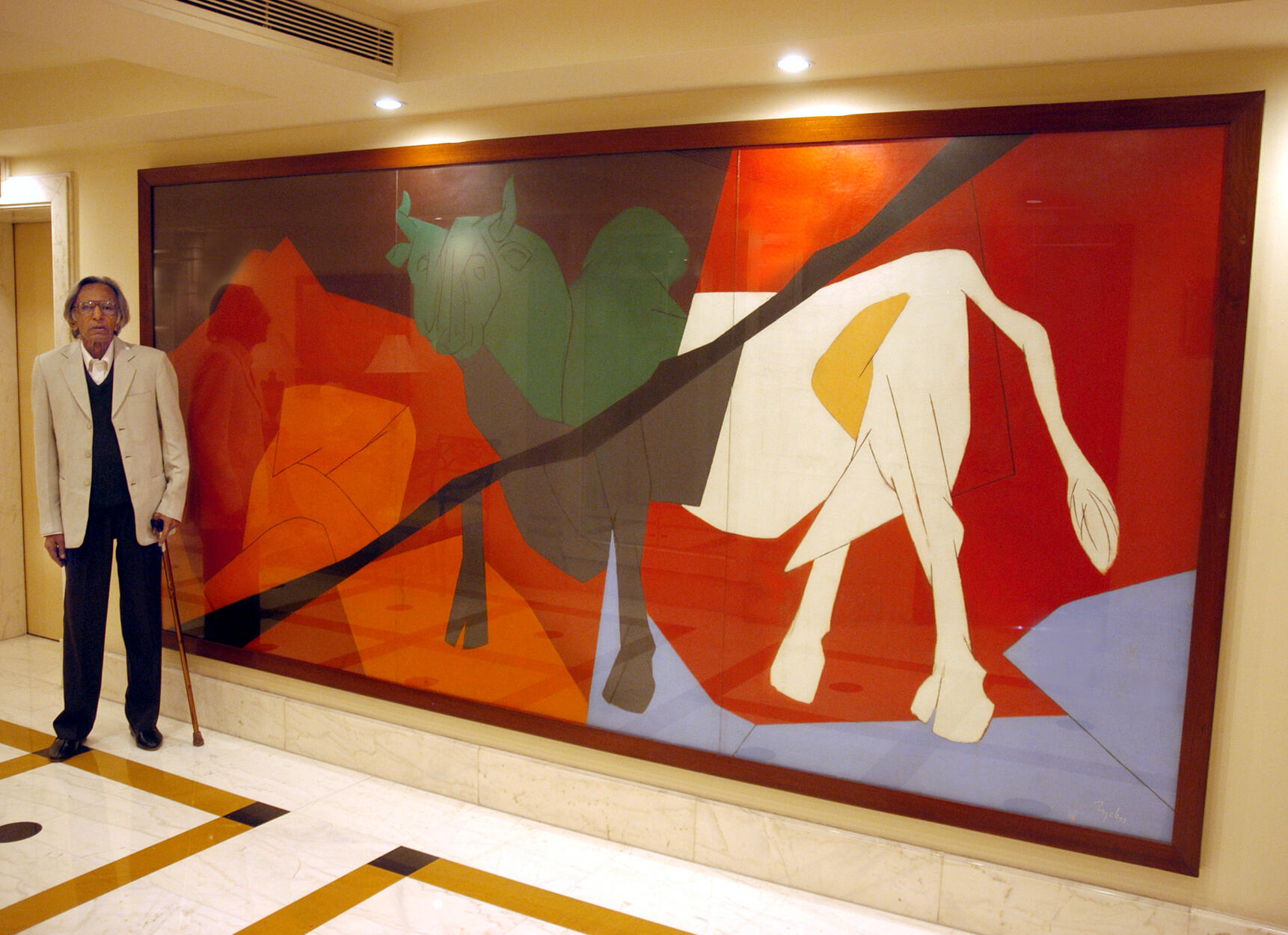
ITC Maurya’s Bull
The diagonal, and the bull were his favourite subjects. This work at ITC Maurya Delhi is a masterpiece in melancholic meditation. Tyeb’s genius lay in his use of colour, composition, and his radical painting technique of goat planes and fragments. His use of colour here is theatrical: set against a background of darkened planes, the palette is energised to a new intensity with each colour vying for supremacy against his more habitual hues. The figure of the bull bursts with life, imbuing the work with emotional charge and drama. The central theme finds its corollary here, its meaning amplified by the subject of the bull a symbol of torture in slaughter houses in Mumbai.
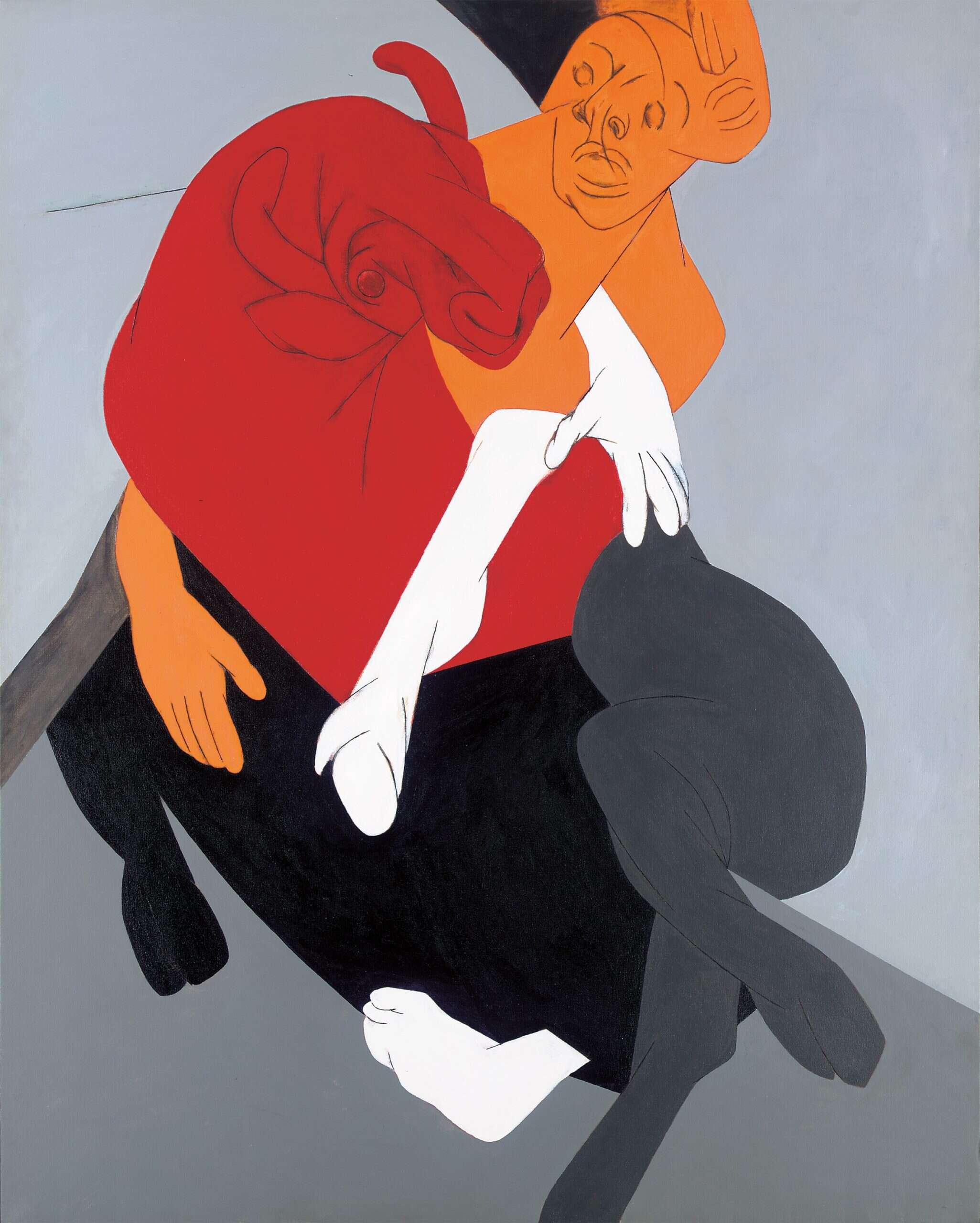
Mahishasura 1997
Sold at Christie’s in 2005, his Mahishasura,created ripples in art circles. Ranjit Hoskote wrote that ‘the bodies of the protagonists slip and knot over one another, entwined as though in some exalted act of yogic origami; the disembodiment, the torsion and the inflammation become tropes of war and love.’
Tyeb’s distillation of highly mythic religious themes of this story to a single frame, recast Mahisha as a sympathetic figure in a seductive embrace with Durga.The flat colours and the planes all created their own story.
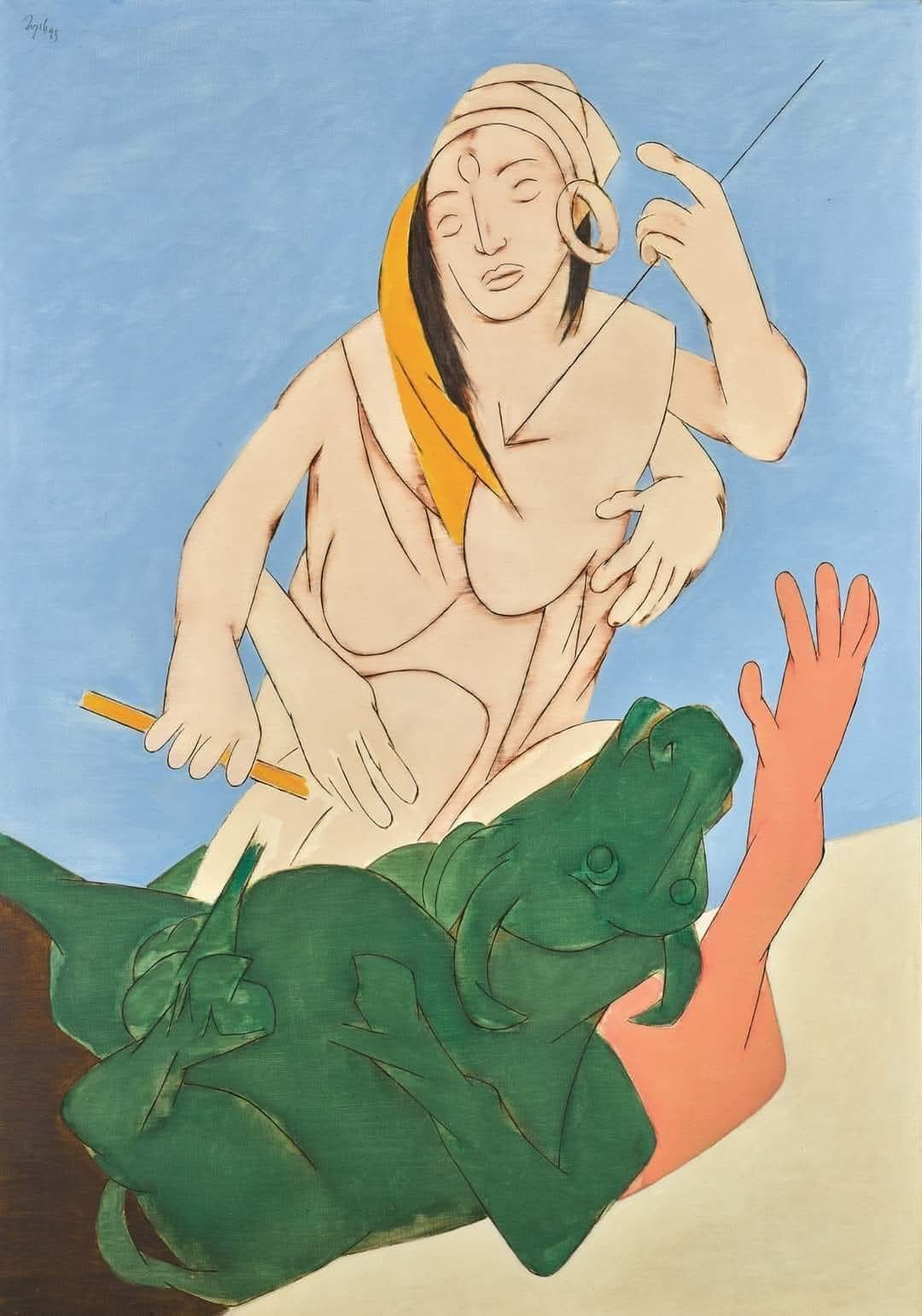
Durga Mahishamardini Sotheby’s
Painted in 1993, Tyeb’s Durga was executed during a time of rising communal tensions in Mumbai. In late 1992, a series of brutal city-wide riots greatly affected him. In this state of mind he created masterpieces. Unlike his earlier diagonal works which directly dealt with misery and suffering, the present work evinces a feeling of hope and optimism, transmuting thoughts into a sophisticated multi-layered commentary on the subject of human drama. Durga Mahisasura Mardini uses a passionate palette and poignant imagery resonant of this period in time. The two figures, the goddess Durga and Mahishasura, oscillate between abstraction and figuration.
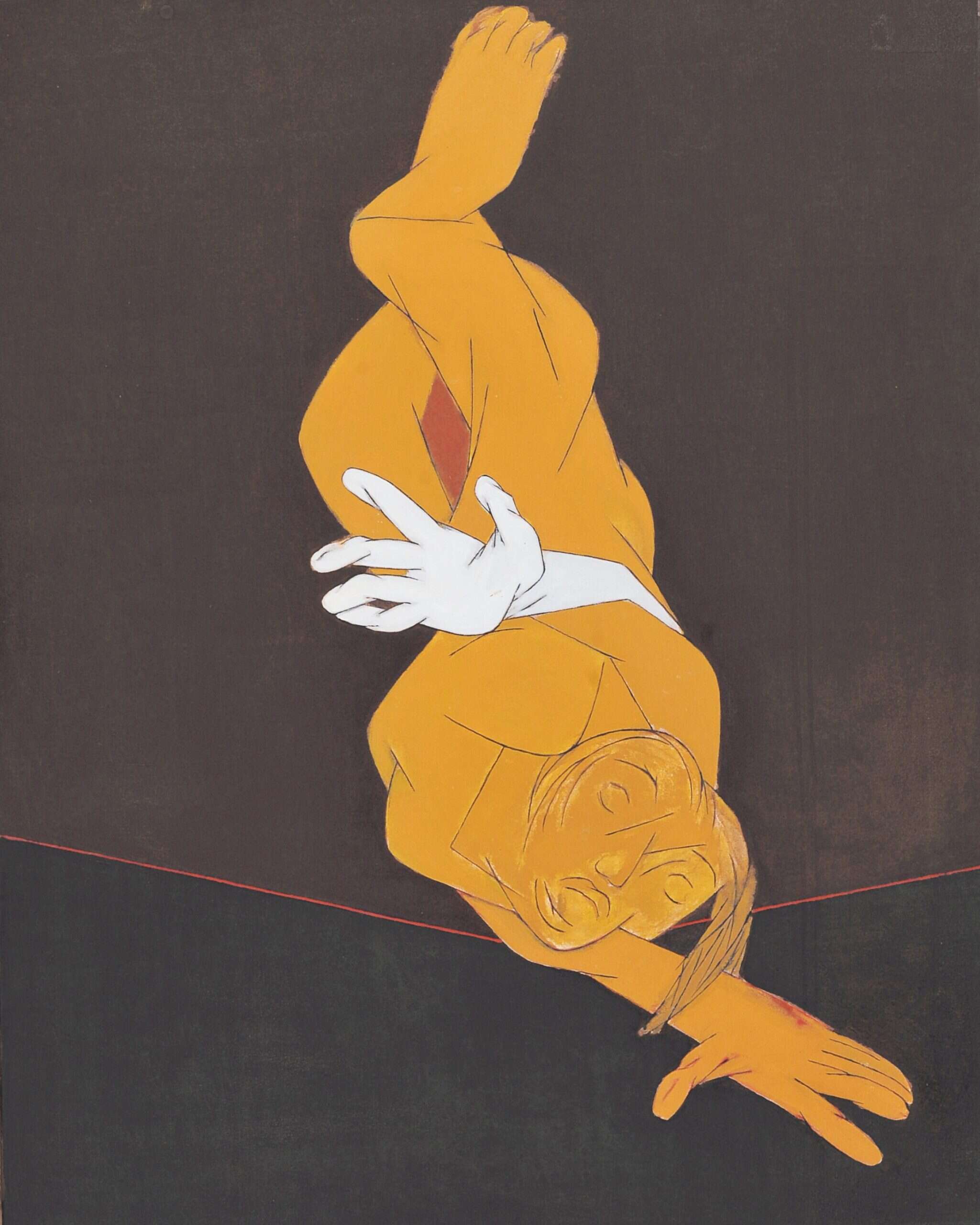
Falling Figures
The falling figure, the goddess, the rickshaw-puller and the trussed bull are some of the recurring motifs in Tyeb’s works. Many of his works are meditations on the human propensity for violence. The falling figure, making an appearance in many of his works, is a modernist symbol of universal suffering that he applied specifically to post-Partition India.Created in the image of the vertical falling figure, these works had their own enigmatic aura.
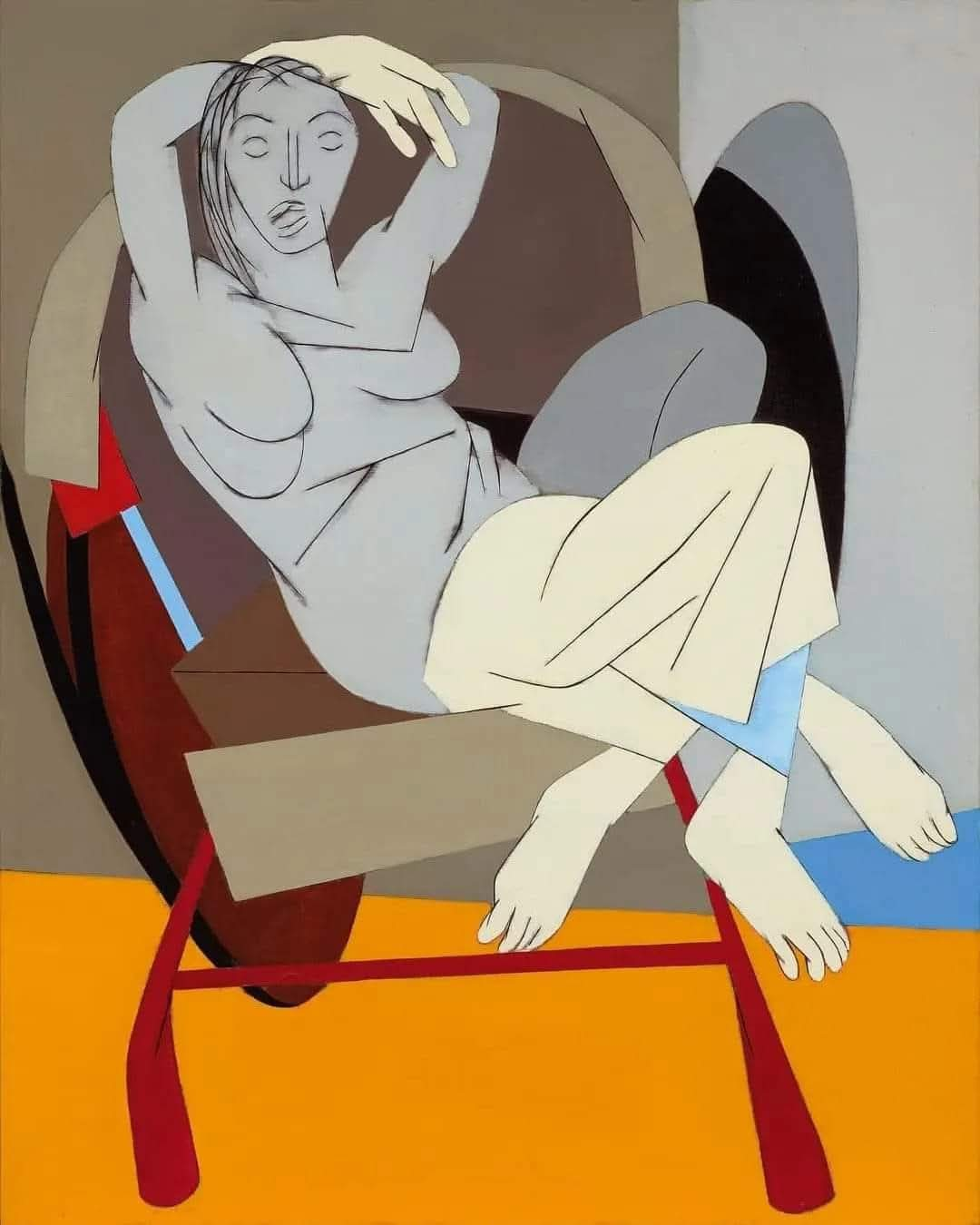
Rickshaw 1984
This rickshaw image with figure is a nostalgia driven work, it reminds us of rickshaw-pullers that pepper the dusty roads and winding inner winding roads of Santiniketan and Kolkata to this day. Tyeb as artist-in-residence for two years in Santiniketan in 1983 saw the Figure on Rickshaw painted during this stay. Tyeb’s invitation reinforced his preoccupation with human sufferings and the celebration and appreciation for life within.
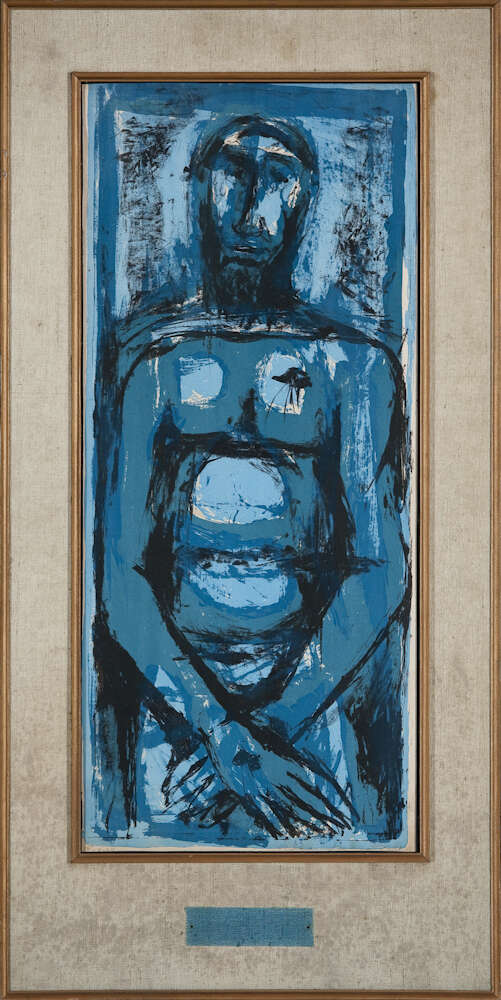
Christ TIFR
A rare work is his Christ at TIFR created many moons ago.This is a passionate blue work that has a hint of melancholic meditation. In all his paintings we see the surfaces were usually matte sheets of flat colour. He applied cubist techniques of fragmentation to depictions of movement from ancient Indian sculptures. Layering iconographic elements into a sparse arrangement, his paintings have acquired acclaim for their sense of movement and profound humanism.
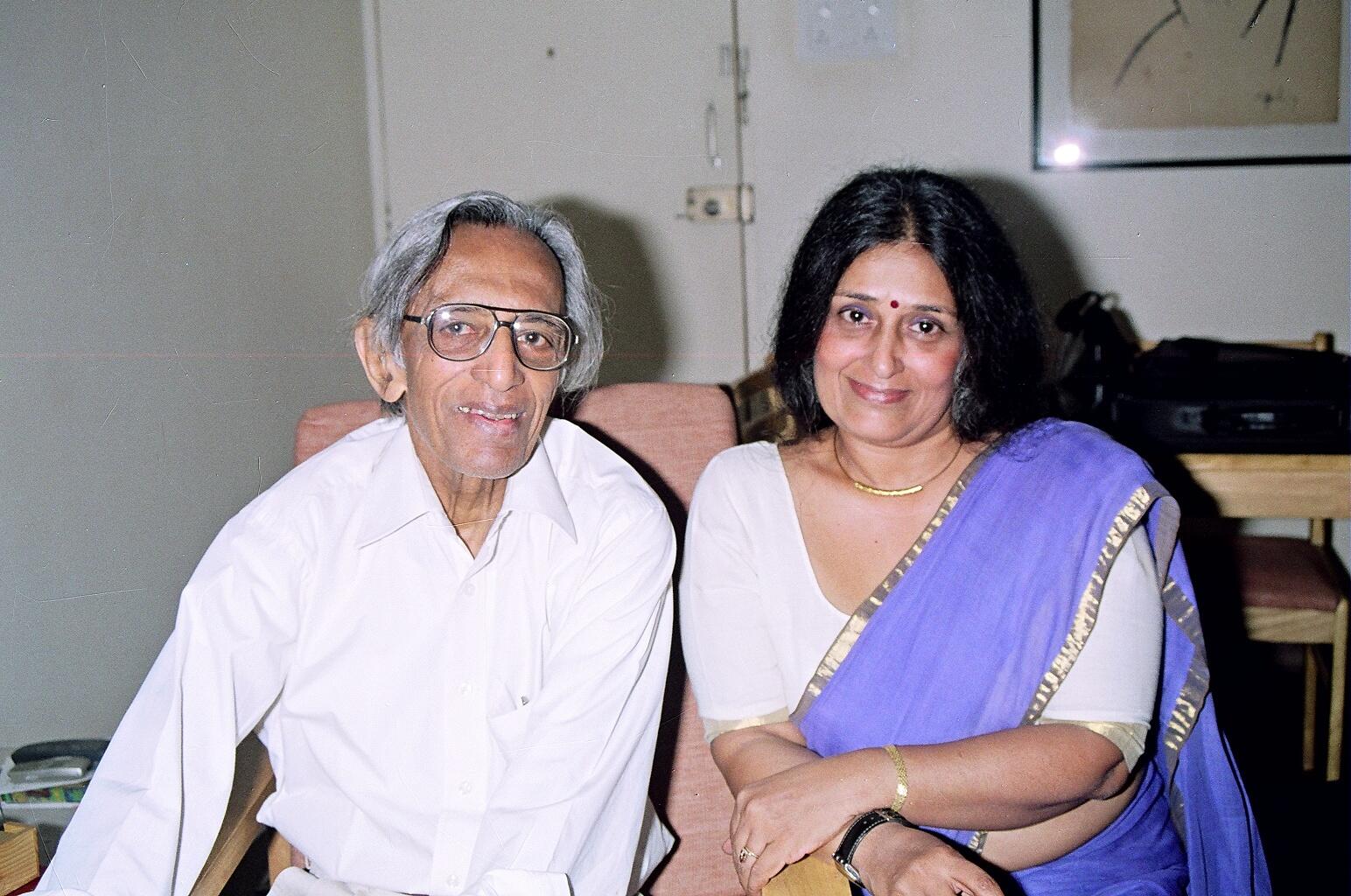
Known as a careful and meticulous painter of grace and gravitas, he painted no more than around 300 works in his lifetime.
In this 100th year of his birth his words about creating paintings with myths remain true and filled with integrity. “ You see with myths one cannot be in a hurry. They should settle into the memory so that you can stop and dwell on them at length.”
Disclaimer
Views expressed above are the author’s own.
END OF ARTICLE